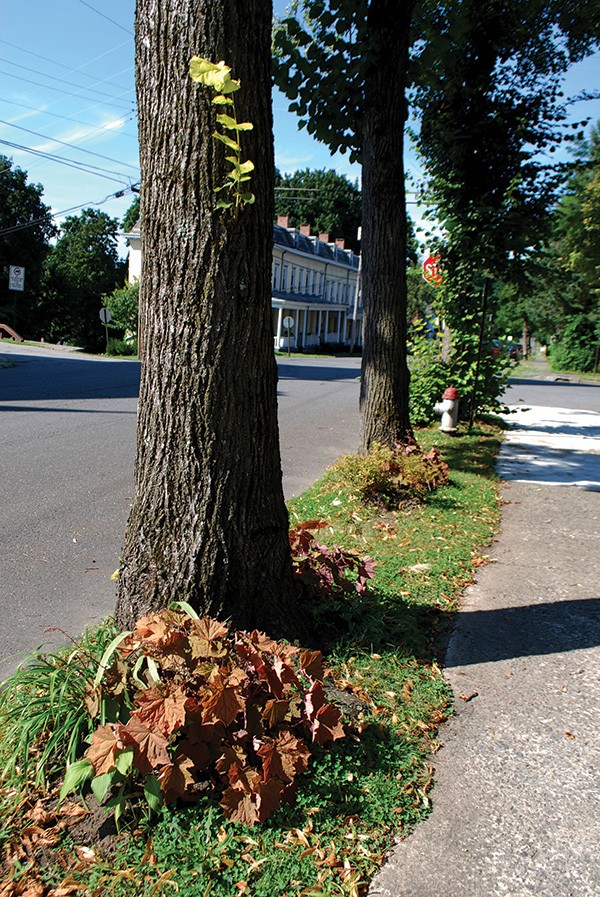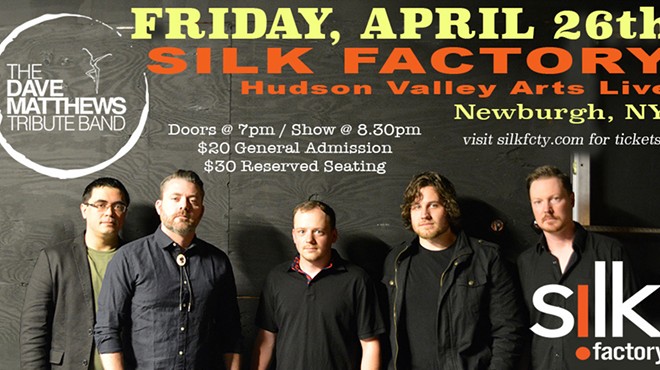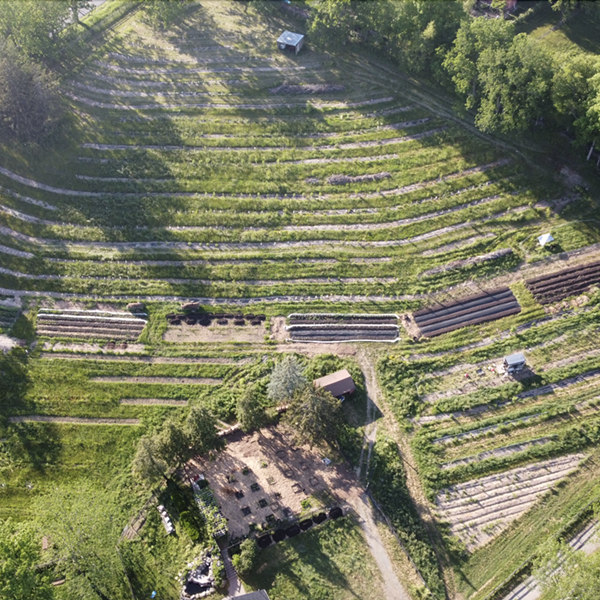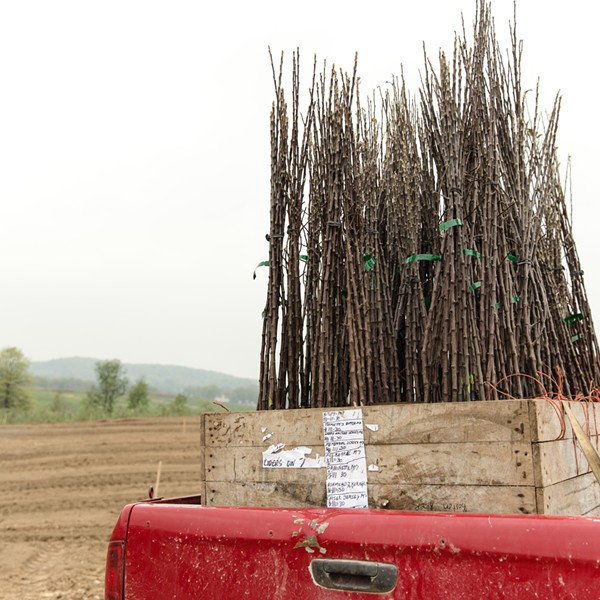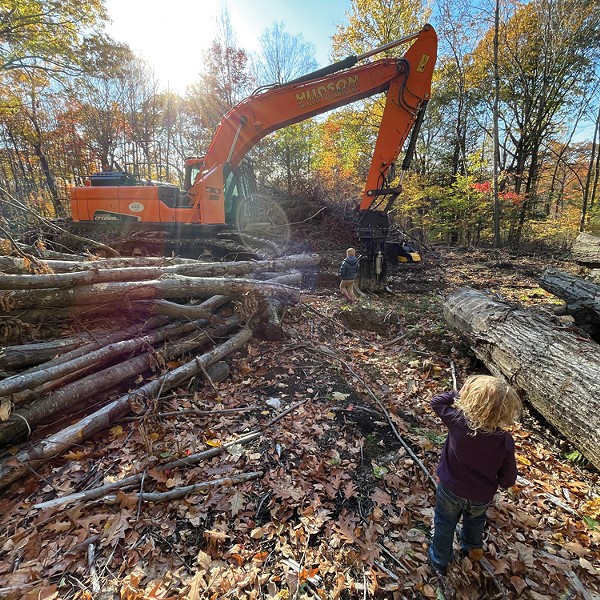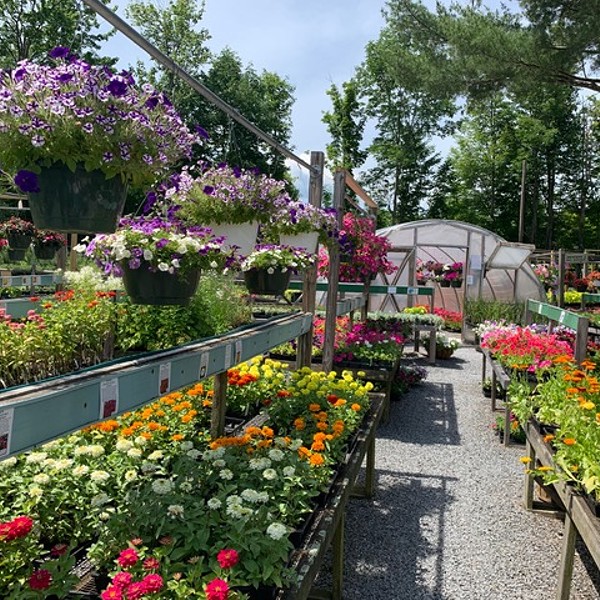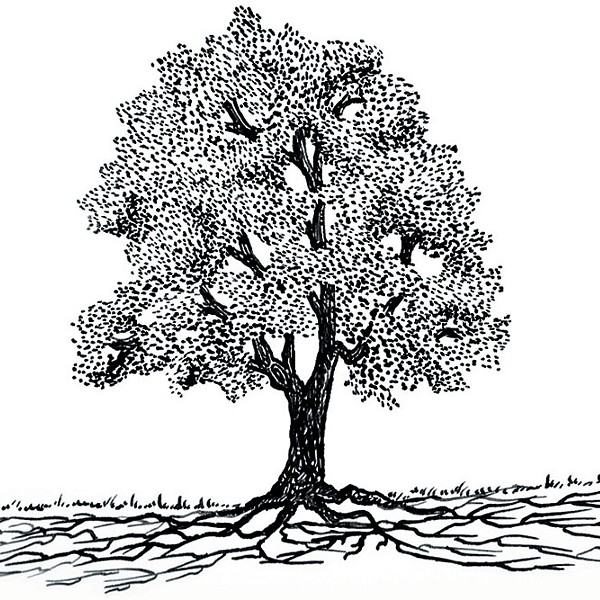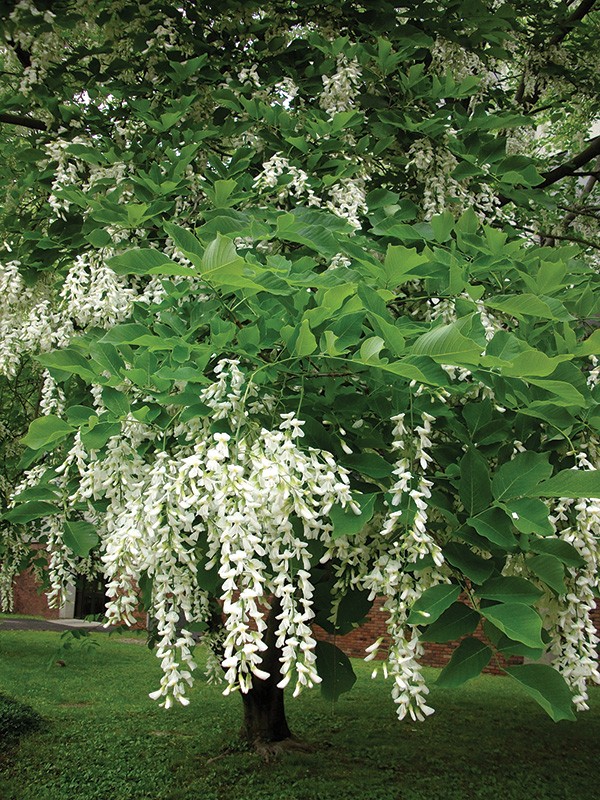
This month, urban forestry concepts and lingo. Next month, why and how to think like an urban forester when selecting and caring for trees.
Life on the Streets
Forestry is managing woodlands for enjoyment, ecosystem health, and wood products. Urban forestry is getting trees to grow in inhospitable environments, like along city streets, so that we humans can enjoy trees' many benefits, like beauty and shade.
In this context, urban means significantly altered by human activity. So college campuses, parks, and even your yard are urban settings, and they are all stressful for trees. Cornell Urban Horticulture Institute Director Nina Bassuk, an expert on street trees, explains why.
"Among the landscapes in which we live," she says, "the soil has been disrupted and probably significantly compacted, which reduces oxygen, nutrient, and water availability to tree roots. Heat is reflected off of buildings, paved surfaces, and cars, putting more water stress on plants. Deicing salts used on paved surfaces can reduce water uptake by plant roots and cause toxic symptoms. Roots that are in the vicinity of pavement and structures often have limited soil volume to explore."
Small, newly planted trees in the urban forest are sometimes subject to the further indignity of vandalism. They are particularly vulnerable to drought, weed competition, and damage by mowers and string trimmers. It's rough out there for mature trees, too. In parks or even alongside your driveway, notice the state of the trees that are closest to foot or car traffic. They will often show signs of stress, like dead branch tips, because their roots have been compacted.
Interventions for Our Trees
Urban forestry gives us tools to analyze a site and then match the right tree to the particular conditions of that site. It asks, what are the toughest tree species for these stressful conditions? How can we best prepare the site before we plant the tree and what is the best way to plant? How do we best care for them in the delicate first few years of establishment, and all their lives?
Why go to all this trouble? Trees make our urban environments livable. They provide beauty, psychological comfort, and energy-saving shade; they calm traffic, they take carbon dioxide out of the air and sequester it as carbon in their wood, their canopies slow down stormwater runoff so that municipal drainage systems are less taxed, they are proven to improve property values, and they provide food and shelter for wildlife.
In the last 10 years, there's been a growing movement in urban forestry to put a dollar value on our urban trees based on their many tangible benefits, like energy savings. Community forestry groups are using free programs like the USDA Forest Service's i-Tree suite of tools to assess the extent and value of their urban forests.
Using i-Tree, Brenda Cagle of Red Hook coordinated a tree inventory and analysis for the Town of Red Hook's street trees. This was part of the Specialized Weekday Arborist Team (SWAT) project sponsored by Cornell Cooperative Extension (CCE) Dutchess County with funding from the USDA Forest Service and a NY Department of Environmental Conservation Urban and Community Forestry grant. It was completed in March 2013 by SWAT team members comprising forestry professionals, Bard College students, and master gardeners from CCE Dutchess County.
The team found that there are 450 trees on public land in Red Hook that provide $70,661 in annual benefits, or $157.02 per tree. She and the team also inventoried Beacon, which has 855 street trees providing $109,304 in annual benefits, and in Cold Spring the SWAT team found there are 437 trees yielding $56,719 in annual benefits.







